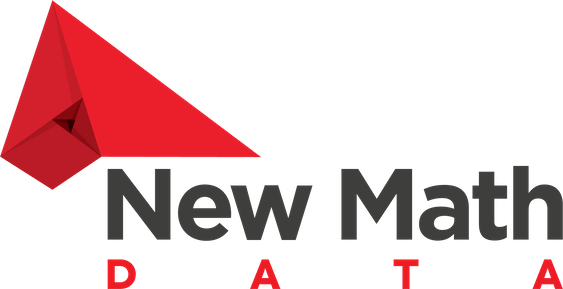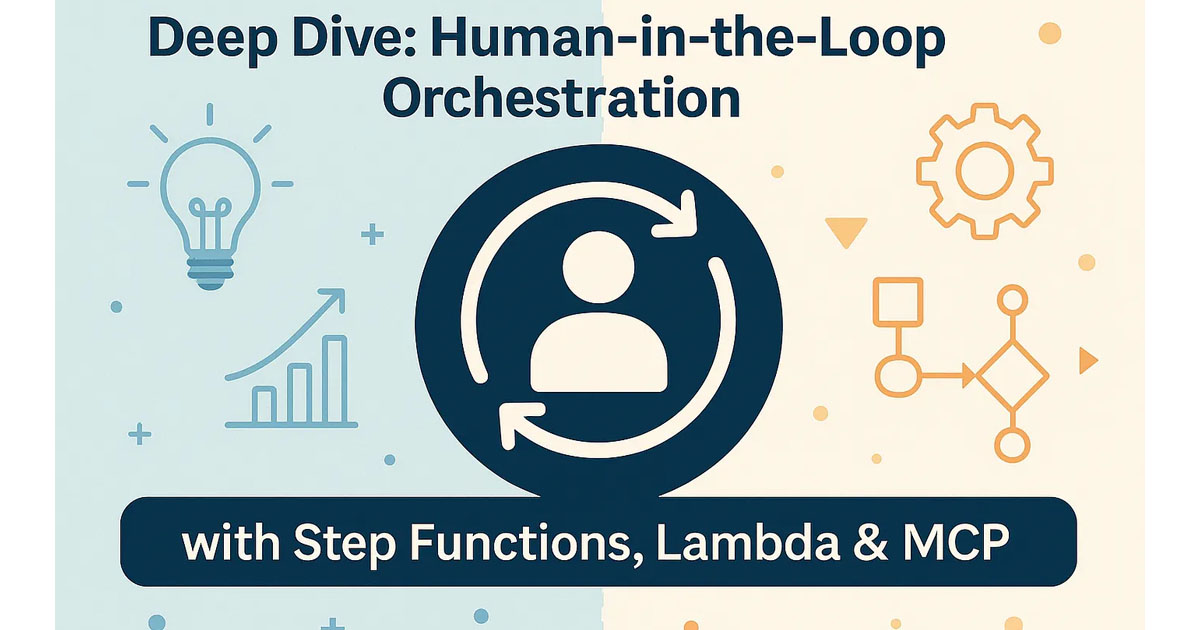Building a Secure, Scalable AI Workflow as an AWS Marketplace Offering
TL;DR
Human‑in‑the‑Loop (HITL) integration adds a critical safety net for AI-driven processes by routing uncertain or high-stakes decisions to human experts. In this blog, we demonstrate our turnkey AWS Marketplace solution that leverages Step Functions to orchestrate the workflow, Lambda functions to execute discrete tasks, and MCP (Model Control Plane) to manage model versions and telemetry. You’ll see how to implement confidence checks, human queues, and automated fallbacks — all packaged in Infrastructure as Code for one-click deployment.
Introduction
AI pipelines promise automation and scale, but unfettered AI risks errors, compliance violations, and loss of trust. Human‑in‑the‑Loop (HITL) design restores control: whenever an AI step is ambiguous or critical, a human reviewer can step in to verify or override.
This pattern is more than “add a review button.” It demands deliberate orchestration: defining when and how AI delegates to humans, enforcing guardrails, and capturing feedback for continuous improvement.
In this post, we walk through our HITL architecture — built with AWS Step Functions, AWS Lambda, and an MCP — to illustrate each design decision, share code snippets, and explain how we’ve productized it into an AWS Marketplace offering.
Business Drivers & Use Cases
High‑stakes use cases drive the need for HITL orchestration:
- Financial Services: Automated loan underwriting, fraud detection, and investment recommendations must comply with regulatory standards. A single misclassification can lead to legal penalties or financial losses.
- Healthcare: AI triage engines suggest diagnoses or treatment plans. Erroneous suggestions without clinician oversight risk patient safety and violate medical regulations (e.g., HIPAA).
- Legal Contracts: Document review bots flag risky clauses in contracts. Without a human lawyer in the loop, critical omissions or misinterpretations can cause compliance failures or legal disputes.
These domains share two demands: (1) guardrail enforcement — no AI decision should violate non‑negotiable rules — and (2) human oversight — experts must validate edge‑case or low‑confidence results. By packaging a proven HITL workflow in AWS Marketplace, we enable organizations to adopt this pattern swiftly, without reinventing orchestration and governance.
High‑Level Architecture
At the core, our HITL solution is a serverless state machine that coordinates AI inference, automated checks, human reviews, and final actions.
- AWS Step Functions: Defines the state machine with sequential and branching logic. It routes inputs through AI inference, confidence checks, manual review queues, and final steps.
- AWS Lambda: Implements discrete micro‑tasks — preprocessing inputs, invoking the LLM, validating outputs, and recording human decisions. Lambdas scale on demand and encapsulate business logic.
- MCP (Model Control Plane): Centralizes model versioning, traffic routing (A/B, canary), and telemetry collection for inference requests. It ensures you can roll back to previous models or route subsets of traffic to new ones safely.
Below is a simplified workflow diagram:
┌────────────┐ ┌──────────────┐ ┌───────────────┐
│ Input Data │ → │ Preprocess │ → │ AI Inference │
└────────────┘ └──────────────┘ └───────────────┘
│
▼
┌────────────────────────┐
│ Confidence Check (SF) │
└────────────────────────┘
│ │
≥ threshold ────┘ │ < threshold
│ ▼
▼ ┌──────────────────┐
┌─────────┐│ SendForReview │
│ Success │└──────────────────┘
└─────────┘ │
▼
┌─────────────┐
│ Human UI / │
│ Approval │
└─────────────┘
│
▼
┌───────────────────┐
│ Final Action / │
│ Post‑Processing │
└───────────────────┘
All steps are defined in an ASL (Amazon States Language) document stored in version control, ensuring reproducibility and auditability.
Component Breakdown

Each Lambda has a dedicated IAM role following least-privilege, and environment variables drive configuration (e.g., confidence threshold, queue URLs).
Human‑in‑the‑Loop Flow in Detail
1. Input Validation (Lambda A)
- Enforce static rules: field presence, data types, maximum lengths.
- Example: reject records missing an
emailoridbefore invoking AI.
2. AI Inference (Lambda B)
- Retrieve the model endpoint from MCP.
- Call the LLM with a structured prompt.
- Return
predictionandconfidencefields.
3. Confidence Check (Step Functions Choice)
"CheckConfidence": {
"Type": "Choice",
"Choices": [{
"Variable": "$.confidence",
"NumericGreaterThanEquals": 0.85,
"Next": "PublishResult"
}],
"Default": "SendForReview"
}
Thresholds are configurable via environment variables or Step Fn parameters.
4. Manual Review Queue
- If confidence < threshold, push the record to an SQS queue and notify a human reviewer (via SNS or EventBridge to Slack).
- The human UI polls the queue, displays input, AI prediction, and rationale for validation.
5. Human Approval/Rejection (Lambda C)
- Reviewer selects “approve” or “reject.”
- The Lambda writes the decision back to a DynamoDB table, including reviewer ID and timestamp.
6. Final Action
- Approved items invoke business logic (persist, downstream triggers).
- Rejected items trigger automated notifications, retries, or fallback pathways.
This explicit flow ensures no AI decision ever bypasses human verification when it matters most.
Monitoring, Logging & Alerts
Reliable operations demand visibility at every stage:
CloudWatch Metrics:
- Step Fn executions, success/failure counts, execution duration.
- Lambda invocation counts, error rates, throttles.
- MCP inference latency and error metrics.
CloudWatch Logs & X‑Ray:
- Trace end‑to‑end requests through X‑Ray to pinpoint performance bottlenecks.
- Log AI response payloads (sanitized) and human decisions for audit.
EventBridge & Alerts:
- On >5% rejection rate within an hour, trigger an alert to the DevOps Slack channels
- On review queue backlog >100 items, send an email to the on‑call team.
A pre‑built CloudWatch dashboard and EventBridge rules are part of the Marketplace deliverable, so administrators get monitoring out of the box.
Best Practices & Lessons Learned
- Idempotency: Ensure each Lambda can safely retry without duplicating side‑effects (use idempotent writes or dedupe keys).
- Least‑Privilege IAM: Separate roles for inference (only needs invoke rights) versus human‑data access (read/write queues and tables).
- Configurable Thresholds: Extract confidence levels, queue names, and timeouts into parameters — no code changes needed to tune behavior.
- Feedback Loop: Periodically export human decisions back into training data to fine‑tune or retrain models — drive down review volume over time.
- Cost Optimization: Warm Lambda containers for high‑throughput inference, reserved concurrency for predictable workloads, and TPU/Graviton endpoints for cheaper LLM calls.
Conclusion & Next Steps
By combining Step Functions, Lambda, and MCP, you can operationalize a robust HITL pattern with minimal overhead. This AWS Marketplace offering encapsulates best practices — confidence checks, human review queues, and comprehensive monitoring — into a single deployable package.
Get Started:
- Visit our AWS Marketplace listing and subscribe.
- Deploy the HITL orchestrator via the “Deploy” button.
- Follow the Quick Start guide to configure queues, roles, and endpoints.
On Our Roadmap:
- Multi‑tenant support for enterprise customers.
- Integrated reviewer UI with embedded annotations.
- SLA‑driven auto‑escalation and audit reporting.
Unlock the power of AI with human judgment at the wheel — deploy today and see how Human‑in‑the‑Loop orchestration elevates both safety and innovation.

